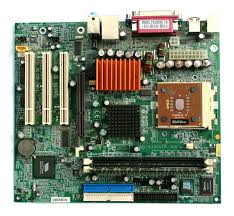Though all motherboards have similar functionality, they are not alike. Each Motherboard differs from the other in size, shape, location of mounting holes, type of power connector and their position. All these attributes together make the motherboard form factors. There are a lot of motherboard manufacturers producing motherboards of various form factors.
What Motherboard You Should Choose?
If you are planning on building a new computer it is a little easy. All you have to do is pick one which suits your needs. But if you intend to upgrade your old computer, you need to have knowledge of what form factor will replace your earlier motherboard. In either of the cases the knowledge about the form factor of motherboards is a must. Also with the fact that the motherboard manufacturers provide you very less details about what motherboard suits your needs, we present to you this article. In this article we discuss about the various form factors that are available in the market and help you choose what motherboard suits you the most.
What are the different motherboard form factors?
There are a whole lot of motherboard form factors in the market. We discuss with you few most popular ones. Lets get into their details:
- Pico-ITX
The Pico-ITX is the motherboard form factor announced by the VIA Technologies in January 2007. This form factor can be employed for small sized and extremely low power computers. The boards of these form factors are a 10×7.2 cm in dimension. Initially these boards only supported the VIA processors. Later motherboards with these form factors were also developed for Intel and ARM chipsets.
The Pico-ITX form factor motherboards only include a few connections like the video output, USB and a 3.5mm speaker jock. The EPIA PX10000G is the first motherboard produced in this form factor.
- Mini-ITX
The Mini-ITX is the form factor which was developed in 2001 by VIA Technologies. These boards have dimensions of 17×17 cm. The Mini-ITX boards can be used in the cases which are originally made for any of the ATX series variants (like ATX, micro-ATX and so on). The boards with this form factor owing to their small size and low power consumption capabilities can be passively cooled. Hence are suitable for home computers.
Currently these boards support the AM2, AM3, LGA775 and LGA1156 sockets. Though the micro-ATX form factor (which you will read about below) is most popular, the mini-ITX form factor boards offer you the best connectivity across computers (powered with inbuilt Bluetooth/WiFi module).
- Micro-ITX
The Micro-ITX boards are the most popular boards in the past decade. It is a standard developed in 1997 by Intel. The boards of the micro-ITX form factor come with dimensions of 24.4×24.4 cm and 17.14×17.14 cm. These boards are backward compatible with ATX and can fit into any ATX case. They also use the same Northbridges and Southbridges chipsets like the ATX boards.
These boards however because of their small size offer less expansion slots. But based on all the specifications they project, they are the most ideal ones.
- ATX
If micro-ATX is the present, the ATX form factor is the past. For over a decade and half these boards were the most popular amongst the lot. With the dimensions of 30.5×24.4 cm these boards have a number of expansion slots. These are free to support any chipset and have a whole lot of connections.
Though the size is an issue in the modern times, the ATX boards are the best. If size isn’t any concern for you choosing the ATX board over the micro-ATX is much better.
There are many other motherboard form factors. But unfortunately they haven’t been so popular like the above mentioned few. It could be because of their size or compatibility or the expansion slots they provide the pico-ATX, mini-ATX, micro-ATX and ATX have grabbed a lot of attention.


